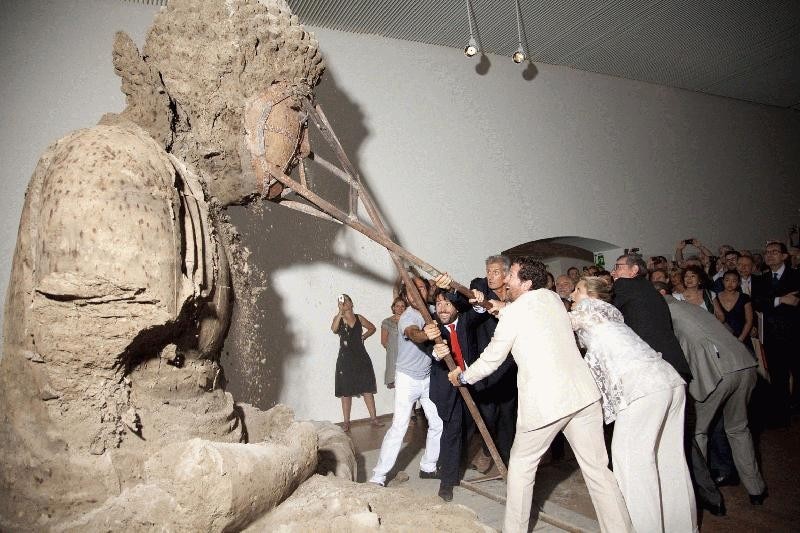PAC, Padiglione Arte Contemporanea, Milan
Until 12 September 2010
The pieces in the exhibition reflect on the theme of
spirituality which is crucial to the poetry and life of this
absolute protagonist on the scene of contemporary Chinese
and international art.
His works spring from the intricate link between Buddhist
spiritual practices and various traditional Chinese
techniques and take inspiration from cultural and
iconographic sources. These are brought together by an
intense, contemporary and versatile expressiveness.
Performance, photography, sculpture, video, painting are
instruments that Zhang Huan uses to resuscitate the roots
and traditions of Chinese culture and express a close
relationship with the past, with nature, with history and
himself. Ancient carving techniques, calligraphy, the
religious practice of burning incense, wrought iron
sculpture, the representation of Buddha and the scared
parts of his body, the faithful reproduction of nature and
the popular iconography of Communist propaganda are all
found in Zhang Huan’s work.
Buddha Hand (img 4), Peace 1 (placed in
the courtyard outside PAC) and Berlin Buddha
(img 3) are three large sculptures that demonstrate the
crucial importance of Buddhism for Zhang Huan and his
strong ties with traditional sacred iconography. Displayed
for the first time in public Berlin Buddha is a
fascinating installation with a large Buddha composed of
ash placed in front of its aluminium cast. The Berlin
Buddha represents the most impressive sculptural use of
ash, which comes from the burning of incense in temples
and collected from various places of prayer around
Shanghai. As the exhibition progresses the enormous
figure of Buddha in ash will slowly break up, the sculpture
decomposes gradually depending on the surrounding
environment: the vibrations of the ground, currents of air
and the movement of people who come to the exhibition
change the piece until all the ash has fallen to the ground.
The exhibition brings together some of the most significant
Ash paintings of various different subject matter –
portraits, military scenes, flags, skulls – composed with
incense ash in a range of shades from white to black that
Zhang Huan uses as a real colour. The importance of this
medium lies in the lyrical and spiritual power of this “dust”
that remains from an act of devotion deeply rooted in
Chinese culture and a sign of prayer and hope. The poetic
charm of the incense amplifies the emotional impact of the
paintings and brings to light personal and collective
memories, for example in Samsara, Zhong-Shan-Suit,
Winter Night, Felicity No.5 and two portraits of Mao
(Mao Portrait No. 1 and Mao Portrait No. 2).
Zhang Huan was born in 1965 in An Yang
City in the province of Henan , China; he lived in New York
from 1998 to 2005 before moving to Shanghai where he
presently lives and works.
Images, from above:
1-2. Project B, Photo Nico K. Tucci
3. Berlin Buddha
4. Buddha Hand, 2006, Copper, Collection Caspar H.
Schubbe
5-6-7. Family Tree series, 2000, C prints edition of 25,
Courtesy of Friedman Benda, New York
Zhang Huan: Ashman

View Article details
- Giulia Guzzini
- 16 July 2010